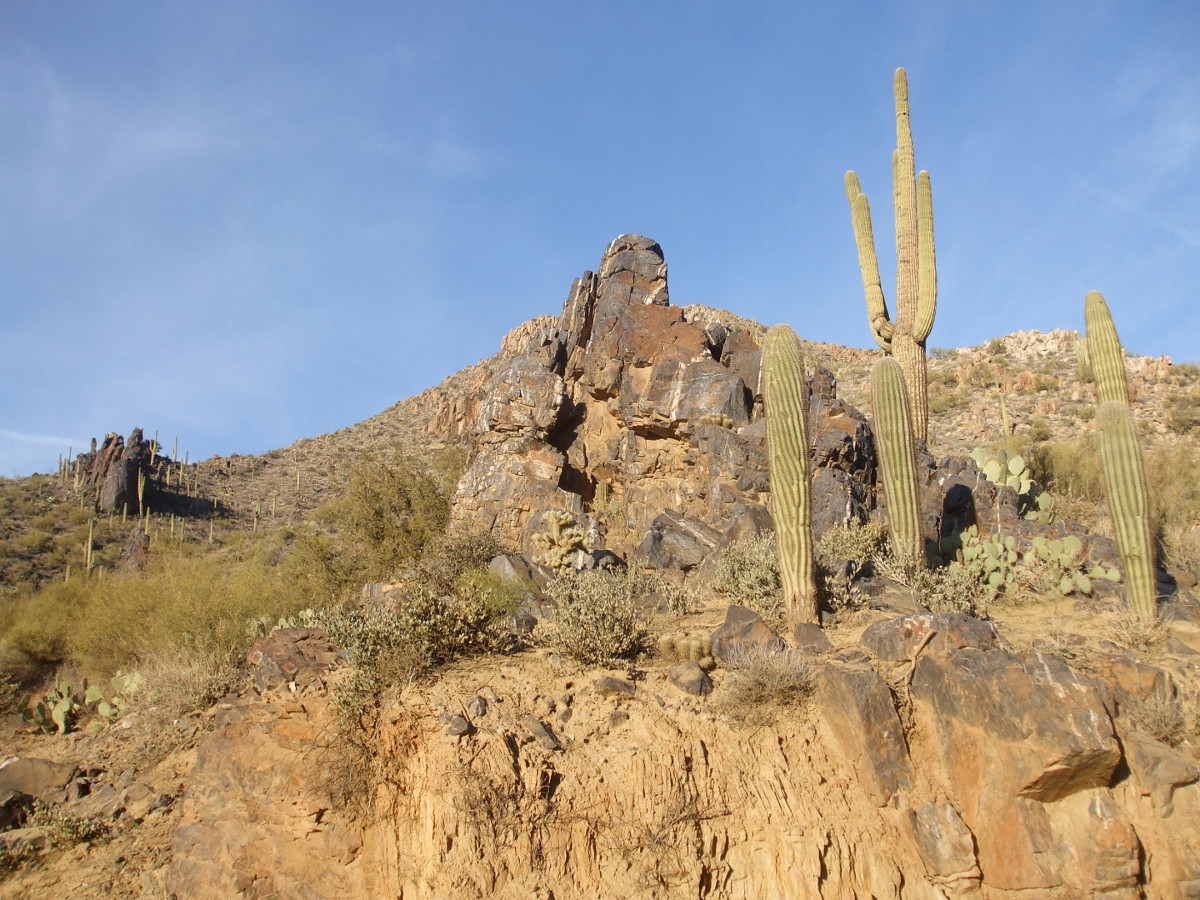

| Coordinates: | 34° 16' 23.31" N 112° 12' 45.91" W 3375' (WGS84) (Google Maps) |
| Land Status: | Prescott National Forest |
| Description: | The geology of the Cleator area is quite spectacular. (Hence the three entries on minerals in the Cleator area on this website... There are still several localities in the area that I have yet to visit...) There are some very interesting Paleoproterozoic exhalite deposits to the east of town where one can find samples of banded iron formation (BIF). Exhalites in general are chemical sedimentary rocks that are precipitated around submarine volcanic vents. These Paleoproterozoic exhalites include such crazy rocks as tourmalinite, a chemical sedimentary rock comprised of tourmaline that was precipitated out of the water column. (I have yet to find a piece of this rock in the area, although I also haven't searched through these outcrops too much.) The BIF is the more distinctive and readily discernable lithology in these deposits. In general, BIFs are comprised of hematite and magnetite, which are both iron oxides. Since they contain magnetite, they are often somewhat magnetic. They often contain red chert (jasper), although at this specific BIF outcrop there isn't too much intercalated chert (black shales are more common). BIFs are very important and unique in the geologic record, as they represent the uptake of free oxygen that was produced by little proto sea bugs (i.e., cyanobacteria) to form iron oxide. The settings and times in which they were formed therefore are noted as anoxic. The famous Archean BIF deposits of Michigan and Minnesota represent a time in Earth's history when all free oxygen was consumed to produce such iron oxides, so there was no free oxygen in the oceans or the atmosphere. While the outcrops near Cleator are not as spectacular as the world-famous deposits in the Midwest, it is nevertheless cool to collect such a unique rock type. BIF outcrops lie right along the road into Cleator. You can identify the BIF by the metallic black hematite and magnetite layers as well as by the weak attraction to a magnet. A few mines have also been punched into the ground in the area to exploit the metal mineralization associated with the volcanic exhalites. The metamorphic rocks around Cleator are all Paleoproterozoic in age (1.8-1.7 billion years old) and are part of the Yavapai Province. They are largely metamorphosed sedimentary rocks that were deposited in the ocean around a juvenile volcanic arc, which would have been similar to the modern Philippine Islands or Sumatra. |
| Resources: | Geologic Map and Proterozoic Structure of the Cleator Shear Zone, Yavapai County, Arizona (Arizona Geological Survey) J.F. Slack, T. Grenne, A. Bekker, O.J. Rouxel, P.A. Lindberg, Suboxic deep seawater in the later Paleoproterozoic: Evidence from hematitic chert and iron formation related to seafloor-hydrothermal sulfide deposits, central Arizona, USA: Earth and Planetary Science Letters 255, 243-256 (2007). |
| Site visited on 12/31/2011 | Page created on 11/15/2014 |